Composting is each a pure and cultural apply.
In wild ecosystems, expired provides is decomposed and later its nutritious elements are taken up by completely totally different vegetation. People have picked up on this apply, and have used it for our non-public income for an entire bunch of years.
However what defines healthful compost?
It is attainable you may view compost correctly being from its effectivity in decomposing pure provides – in a number of phrases, the ecosystem correctly being all via the pile itself.
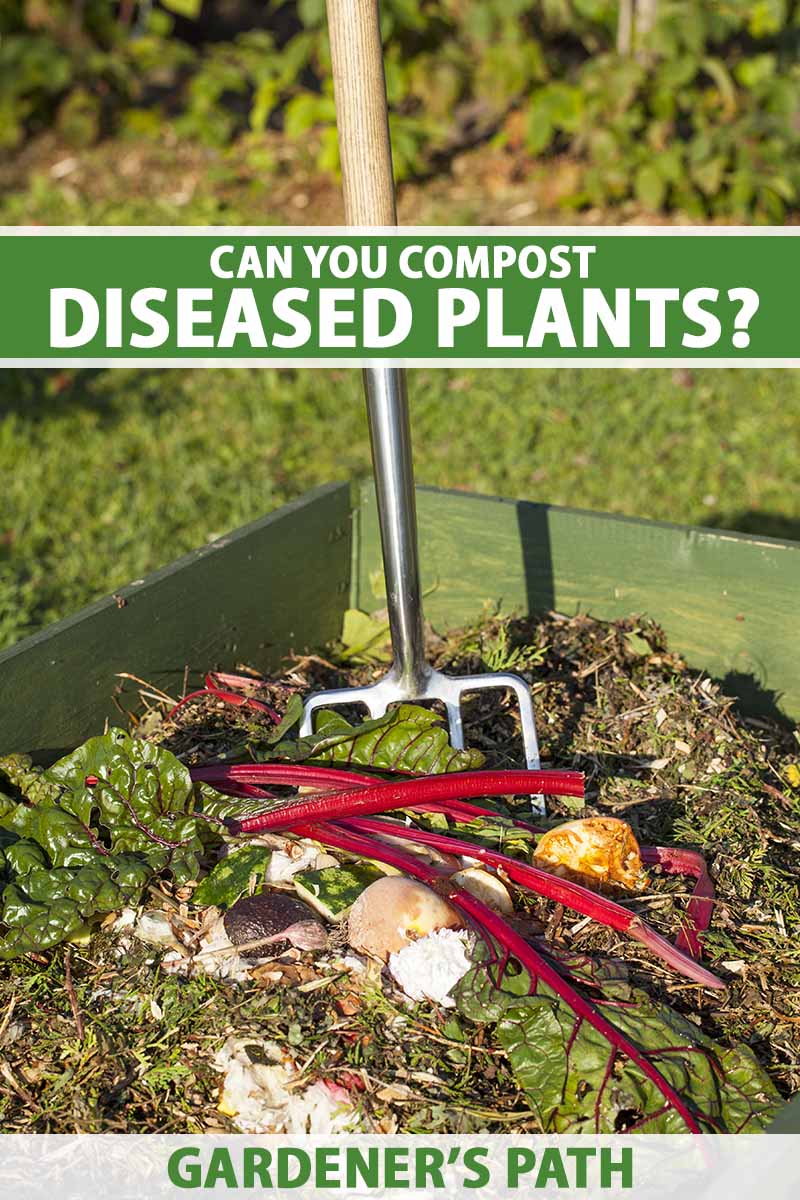

We hyperlink to distributors that will assist you to uncover related merchandise. For a lot of who purchase from one among our hyperlinks, we’d earn a fee.
You may also view compost correctly being from the angle of reside vegetation – how will vegetation’ correctly being be affected by the use of the utilization of it?
Compost carries helpful property for crops in your yard or small farm, most notably contained in the type of dietary nutritional vitamins and helpful microbial life. It furthermore gives full optimistic outcomes on soil correctly being in contrast with constructive completely totally different agricultural administration practices.
Nonetheless, it would most likely furthermore carry dormant types of plant pathogens that set off illness.
Plant ailments attributable to pathogens have gotten extra variable throughout the globe, partly as a consequence of an more and more extra fluctuating native local weather.
In my lab at The Ohio State School, we evaluation species of the water mildew Phytophthora, which normally produce spores which can overwinter, turning into practically not potential to obliterate from affected fields.
Many different pathogens superior comparable methods for persisting open air of hosts. These variations can doubtlessly permit pathogens to persist in compost.
Alternatively, some composting strategies will help administration pathogens. It would quell numbers of pathogens so that they’re diminished to undetectable ranges, relying on the species.
There are far too many plant pathogens all through the globe to cowl in a single article! I’ll inform you about some frequent species, and whether or not or not or to not take care of these pathogens with compost.
Listed beneath are 4 broad forms of pathogens and their common indicators, adopted by strategies whereby compost can change the unfold:
Oomycetes
Mildews and a great deal of root, stem, and fruit rots are attributable to microorganisms typically often called oomycetes. They’re associated to algae, and are sometimes typically often called “water molds.”
Sicknesses attributable to oomycetes can normally appear like fungal ailments.
Widespread oomycetes embody Phytophthora, Pseudoperonospora, and Pythium species, which have terribly enormous host ranges all through the globe. Most crop species are affected by a minimal of 1 amongst these three genera.
Downy mildews are induced primarily when spores splash onto leaves with rain. Stem and root rots primarily happen when plant elements are involved with contaminated soil.
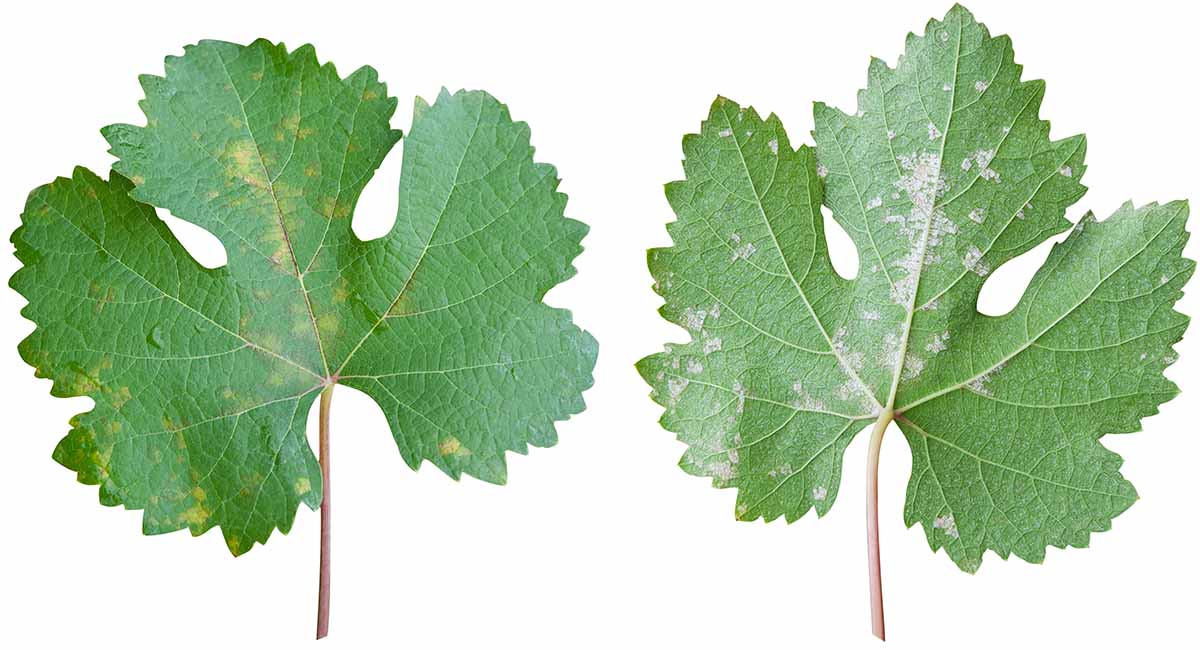

Downy mildews on foliage are seen to the attention on account of their sporangia, which seems as a white, fuzzy coating on bottoms of leaves, and corresponding oil spots on the tops of leaves.
Leaf blights from oomycetes set off wilting and brown, necrotic exhausting spots on leaves. Stem and root rots are normally darkish and necrotic, and presumably moist to the contact.
Phytophthora species type thick-walled, overwintering our our our bodies typically often called oospores, which might persist in soils for years, and can even be transmitted by the use of pure water our our our bodies that will presumably might be discovered concerned alongside alongside together with your yard.
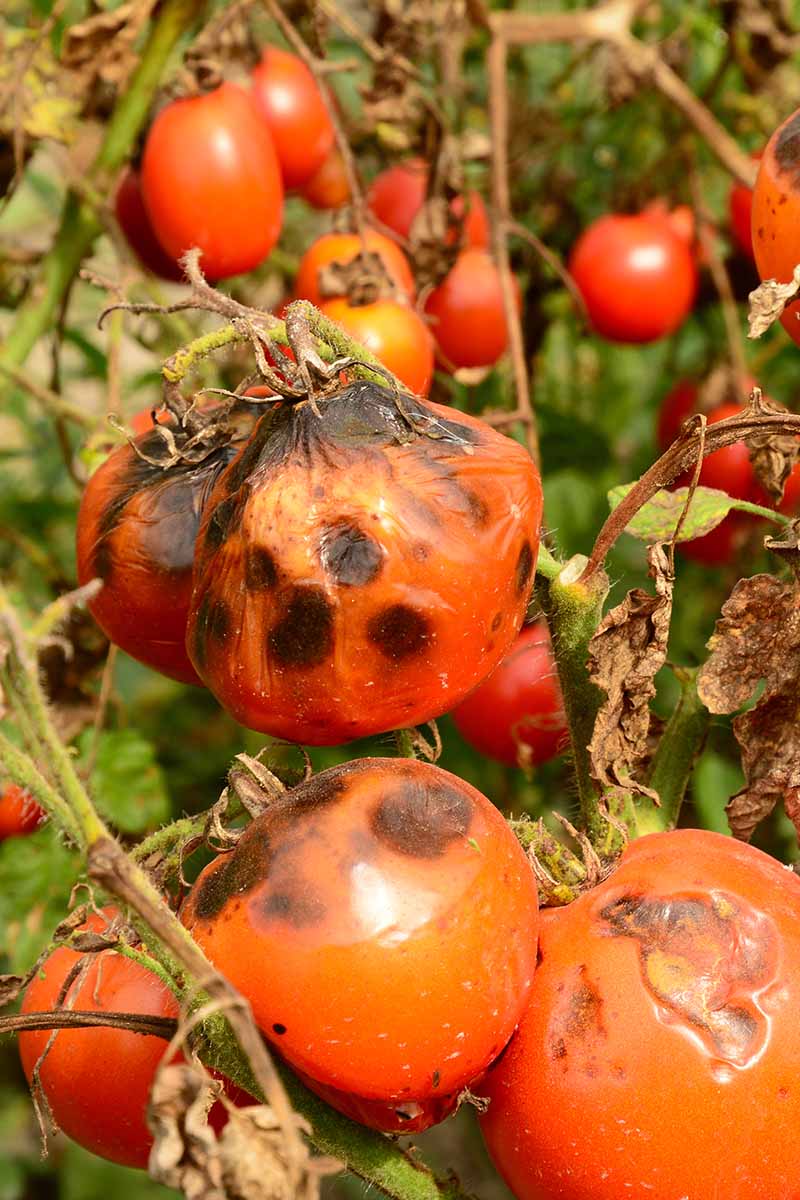

Oospores of varied oomycetes have comparable sturdiness. These oospores can doubtlessly persist in compost.
Compost functions in additional temperate climates usually tend to permit oomycete spores to develop to be their overwintering half, in distinction to people who are saved at hotter temperatures.
There is also analysis about totally completely totally different strategies of suppression of oomycete species.
In a evaluation on rooibos, revealed by the The American Phytopathological Society, composting suppressed damping off from about half of the oomycete isolates examined, relying on the species and supply.
In a single totally different evaluation, damping off in cucumbers was diminished when crops had been handled with water extracted from chitin-based compost.
Primarily based completely on these two evaluation, we’ll conclude that composting can have a light-weight to widespread function in reducing oomycete inoculum. Scorching is less complicated than chilly, so in case you are along with plant tissue contaminated by oomycetes, ponder defending your pile with plastic or a lid to extend the temperature.
Anaerobic soil disinfestation is confirmed to be terribly surroundings pleasant in eliminating Phytophthora and Pythium.
It is attainable you may apply this precept to your composting apply by guaranteeing an anaerobic surroundings – by defending the pile to extend temperature and sustaining it moist.
For a lot of who proceed to see indicators of the equal oomycete-caused illness the subsequent season, then it’s greatest to remove diseased tissue as a substitute.
Viruses
Viruses on vegetation have a singular look in contrast with completely totally different microbial pathogens.
Utterly several types of pathogens like water molds, fungi, and micro organism normally result in clear indicators of decomposition, and may have significantly superior overwintering varieties.
Viruses, alternatively, can normally change their type and progress sample, and normally don’t develop a dormant physique.
Mosaic, mottle, and necrotic viruses are seen programs of plant viruses which can be attributable to the equal teams of viruses, presenting one other approach relying on the host genetics.
Mosaic viruses set off a coloration sample that resembles an internet. Normally, mosaic viruses set off chlorosis (yellowing) alongside the veins in leaves, revealing this weblike sample. Most viruses furthermore set off uncommon curling of leaf edges, and full misshapen vegetation.
Two of the commonest plant viruses are tobacco mosaic virus (TMV) and tomato mosaic virus (ToMV).
Tobacco Mosaic Virus
TMV is presumably the commonest plant virus worldwide, infecting over 300 species.
It’s unfold mechanically by contaminated sap that comes into contact with units, arms, and gives, together with by seed.
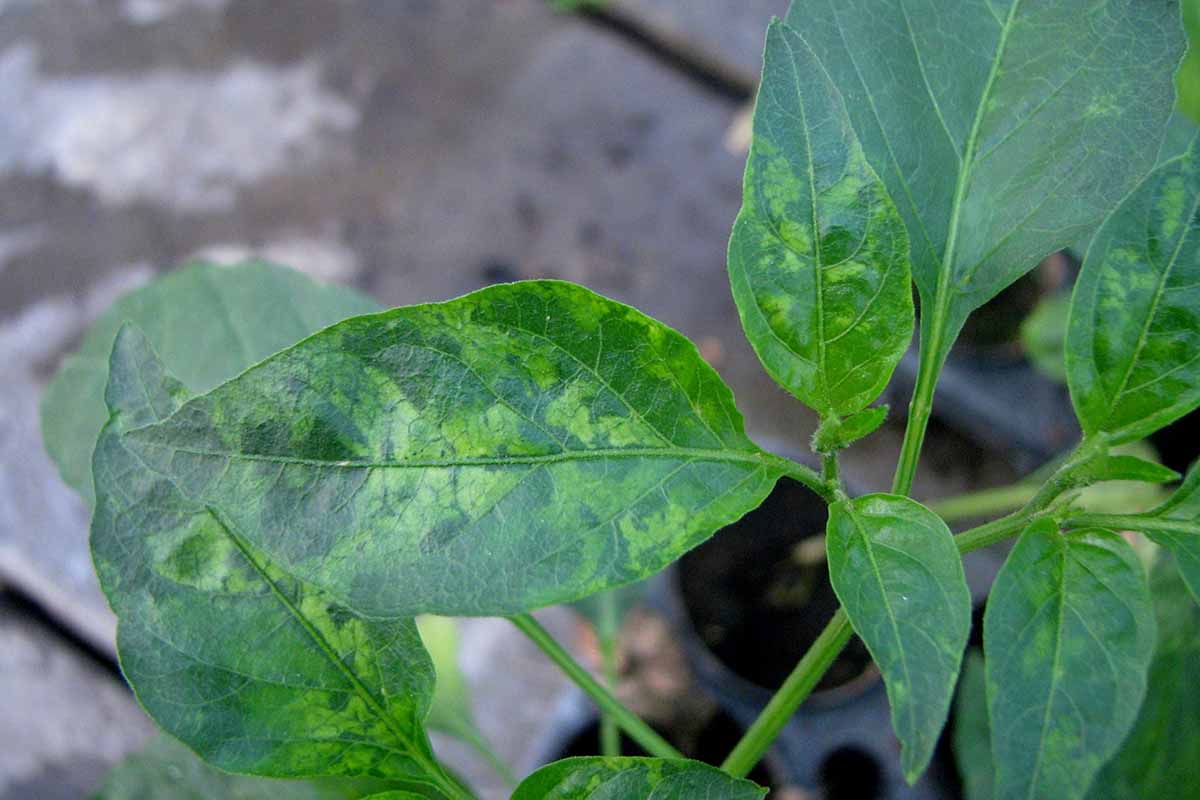

Tobacco mosaic virus is sort of standard, and utilizing tissues contaminated with TMV in compost merely is just not truly helpful.
Tomato Mosaic Virus
Tomato mosaic virus will even be transmitted mechanically and by seed, together with by aphids and completely totally different sap-sucking bugs.
Contaminated specimens normally have stunted progress, curly leaves, and a lightweight grayish-green mosaic sample on the leaves which can flip yellow. The discoloration seems blotchy, normally bordered by leaf veins.
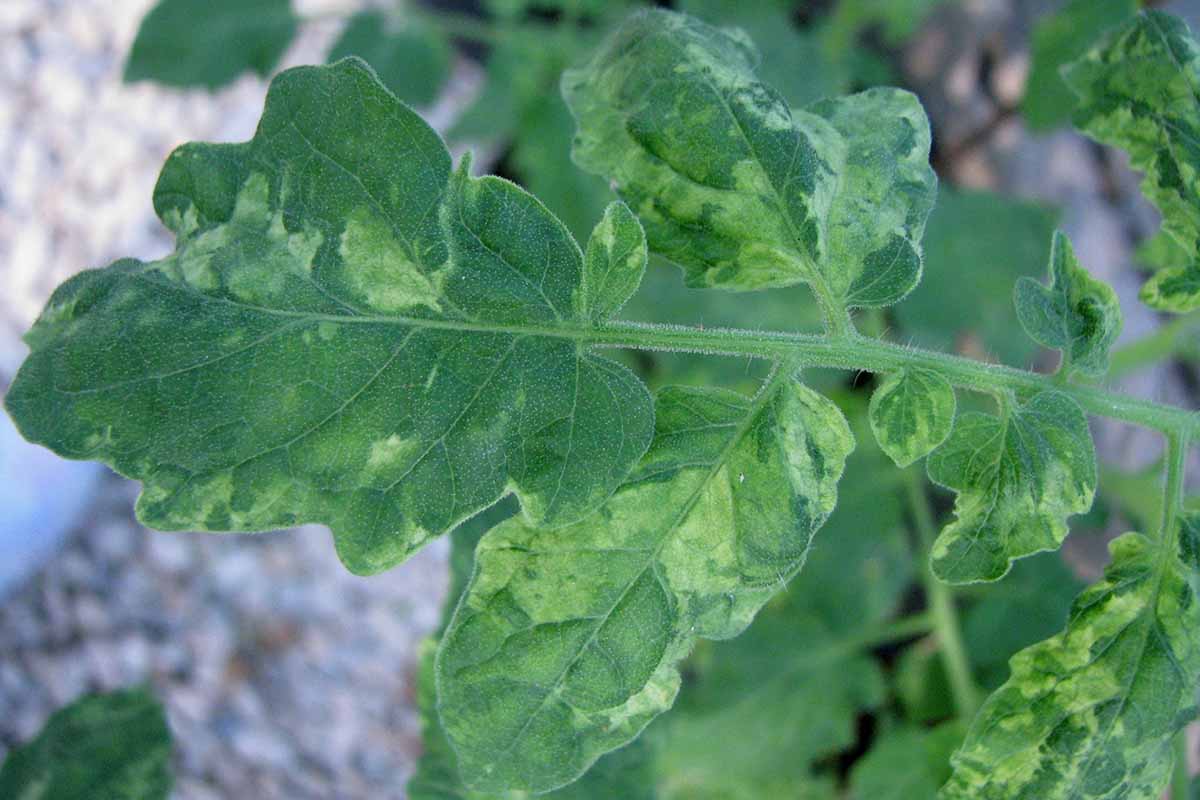

ToMV impacts all solanaceous crops like tomatoes and peppers, together with constructive decorative species.
Fortunately, ToMV has been confirmed to be unstable over extended durations of time with out a quantity. It merely degrades after 75 days of composting, even at colder temperatures.
Utterly totally different Viruses
Relying on the virus, drying of plant provides would possibly or could not eradicate it. For example, leaf drying can in the reduction of the infectivity of melon necrotic spot virus (MNSV) nonetheless not pepper delicate mottle virus (PMMV).
Fortunately, composting with irrigation and solarization can normally pay money for full eradication of MNSV and PMMV, together with potato virus Y.
Fungi
Fungal pathogens can current themselves in massively quite a few methods.
Fungi that infect vegetation is likely to be species which are single-celled, filamentous, and even fruiting our our our bodies like mushrooms.
And their methods for persisting open air of the host can change from species to species.
Fungal ailments embody forms of rot, powdery mildew, rust, mildew, and wilt.
Fungal Spots and Blights
Leaf and fruit spot are phrases used to elucidate the appears to be of fungal ailments as literal “spots” on tissue.
These spots can unfold and set off necrosis of tissue, thereby turning into leaf and fruit “blight.”
There are a whole bunch of 1000’s of fungal species that set off recognizing.
Two frequent teams of recognizing fungi are Alternaria and Anthracnose species. There is also little to no analysis on the survival of Alternaria and Anthracnose in compost functions to this point.
Since many fungal recognizing species produce overwintering thick-walled constructions, it’s best to restrict inserting contaminated gives in your compost.
Fungal Rots
Rots attributable to fungi, just like fruit, stem, or root rot, seem clearly extra decomposed and watery than spots or blights. Crops contaminated with rots may need intensive areas of lifeless tissue which are normally squishy.
Rots can flip into cankers if the plant varieties a callus over the affected space.
A typical fungal species that causes tissue rots is Rhizoctonia solani. This species has an particularly enormous host fluctuate and a worldwide distribution, infecting vegetation starting from tomatoes to orchids to timber.
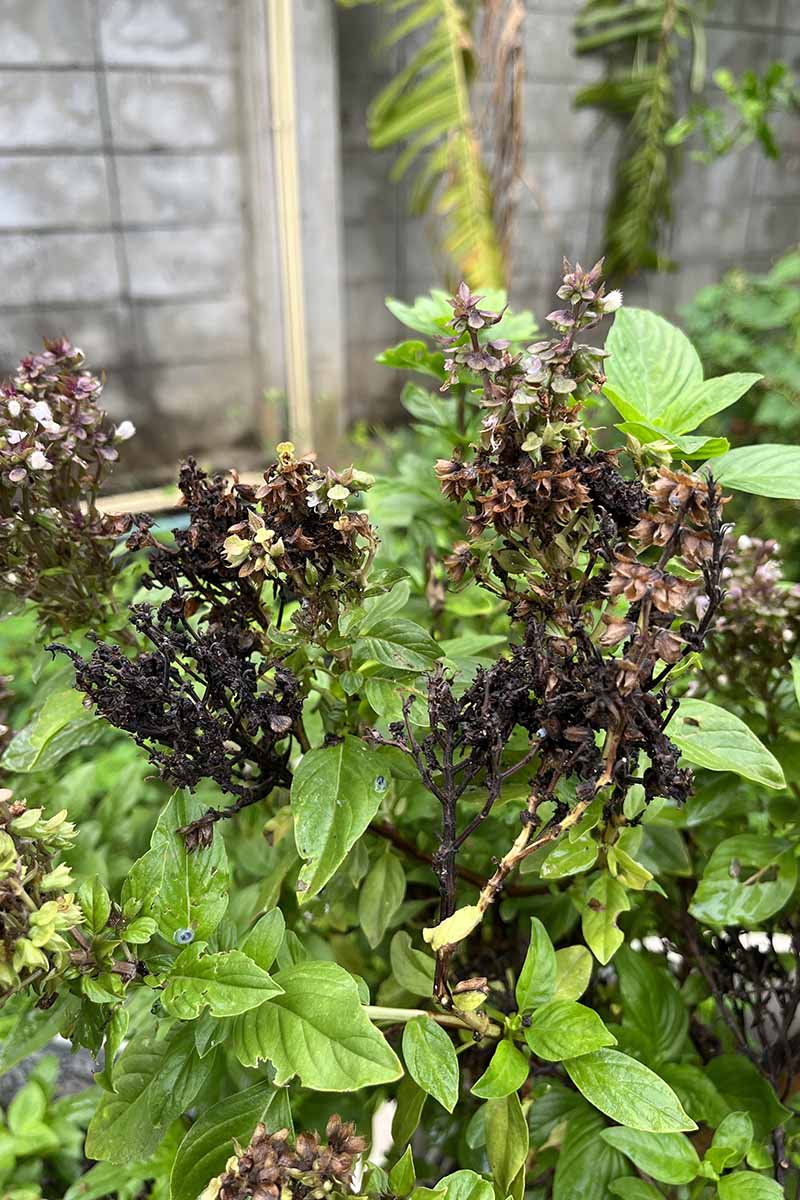

The species produces sturdy, over-wintering microscopic our our our bodies typically often called sclerotia.
Fortunately, quite a few evaluation counsel that some functions can eradicate R. solani to undetectable ranges, together with for numerous fungal rotting species, just like Sclerotinia rolfsii and S. minor.
Though, the precise composting strategies which are greatest for suppressing every species would possibly differ.
Fortuitously anaerobic strategies has been confirmed to considerably in the reduction of Sclerotinia and Rhizoctonia inoculum.
For a lot of who resolve fungal rot in your vegetation, I might attempt composting them coated and irrigated for quite a few weeks.
Powdery Mildews
Powdery mildews are usually powdery in look, and sometimes seem on the tops of leaves. They’re sometimes confused with downy mildew, which is attributable to oomycetes.
Powdery mildews are vulnerable to happen in drier circumstances than downy mildews.
In cucurbits and one different fruits like strawberries, powdery mildew is attributable to Podosphaera xanthii.
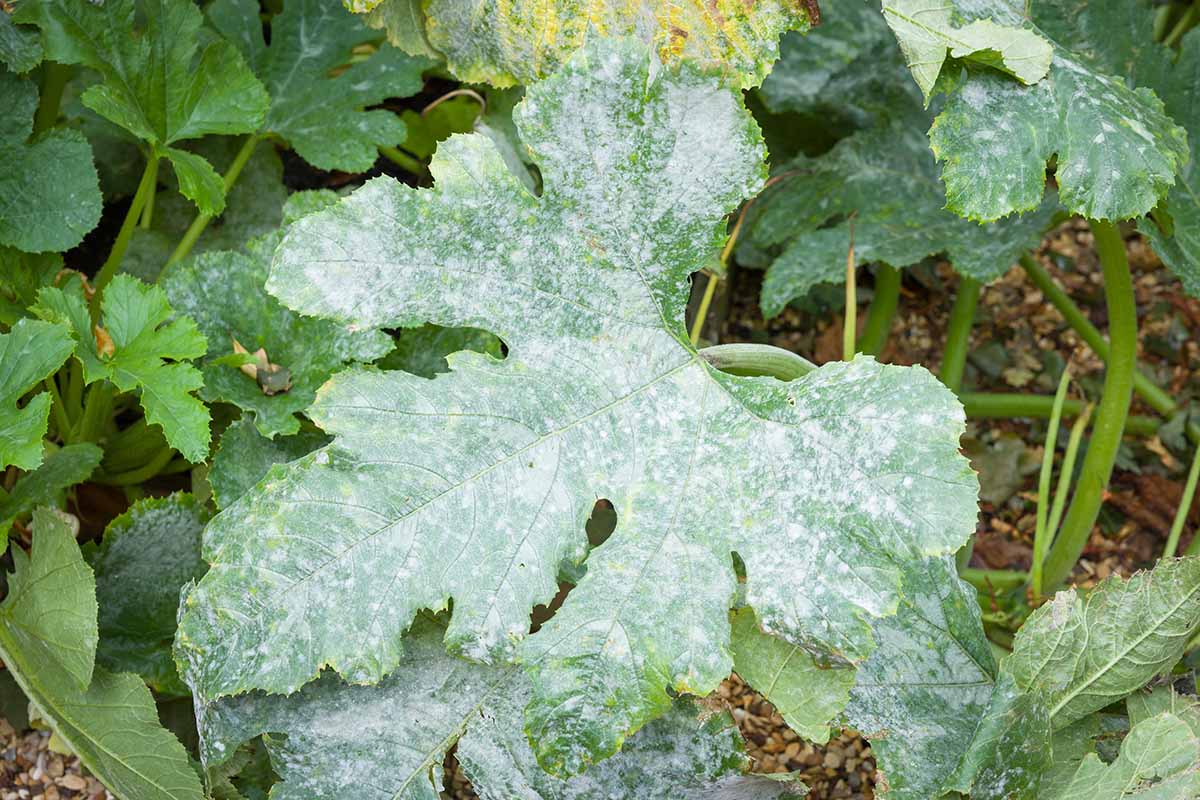

Podosphaera xanthii can produce overwintering spore-like constructions typically often called chasmothecia, which persist in soils for many seasons on plant residue.
Sadly, there’s little analysis obtainable to this point relating to the presence of this explicit pathogen in compost, neither is there for the numerous completely totally different causal brokers of powdery mildew on completely totally different crops.
It’s safer to keep away from placing powdery mildew contaminated tissues in your compost.
You may also attempt a Trichoderma remedy in your pile. Trichoderma is a genus of fungi acknowledged to cut once more plant illness. It has been confirmed to cut once more Podosphaera inoculum in soil.
Rusts
Rusts are ailments attributable to species of Puccinia and Uromyces, with a notable look of raised, small, spherical, brown bumps on leaves typically often called pustules.
The life cycle of rusts is also very superior, and can embody as quite a bit as 5 totally completely totally different spore phases! Many might even profit from quite a few hosts whereas awaiting the availability of their important host.
Teliospores are very thick-walled, sturdy overwintering spores which are sometimes produced.
There are few to no evaluation relating to the viability of teliospores in compost functions. One rust species, Puccinia horiana, could possibly survive the composting course of.
In case your vegetation are contaminated with rust, I might advise that you just simply remove them as a substitute.
Wilts
Wilts are plant ailments with a glorious symptom of, efficiently, wilting!
Plenty of the frequent fungal wilts is attributable to the species Fusarium oxysporum. That is normally a filamentous fungus that overwinters by the use of constructions typically often called chlamydospores, and concurrently reside hyphae contained in the soil.
Composting, notably with inexperienced waste biochar, can presumably have a exercise in reducing viable chlamydospores contained in the Fusarium–tomato pathosystem.
Nonetheless, one evaluation suggests that full eradication of F. oxysporum isolates in compost could also be highly effective.
One totally different pretty frequent wilt is known as Verticillium wilt, attributable to six species contained in the Verticillium genus. Cotton, oilseed rape, eggplant, tomato, peppers, and potatoes are sometimes affected.
In 2020 at California Polytechnic State School, A Verticillium species was examined in petri dishes for progress with totally completely totally different compost amendments, and it was well-known that it pretty suppressed progress of the pathogen.
Nonetheless, ends inside the sector confirmed that these amendments didn’t lower illness full.
Ensuing from this actuality, proceed with warning when composting vegetation diseased with wilt. For a lot of who do have to, ensure that to maintain the pile moist and coated for quite a few weeks.
Micro organism
Plant pathogenic micro organism differ from fungi, oomycetes, and viruses in that they don’t enter actual cells. Instead, they invade the house between cells.
This has induced pathogenic micro organism to evolve massively quite a few strategies for infecting their hosts.
Bacterial infections on vegetation might set off blights, cankers, galls, leaf spots, gentle rots, and stem spots.
Listed beneath are two frequent bacterial genera that infect vegetation, with totally completely totally different methods for an an an infection and survival: Xanthomonas and Pseudomonas.
Xanthomonas
The Xanthomonas genus accommodates species of micro organism which can infect over 400 species. These embody artichokes, dandelions, cabbage, peppers, rice, bananas, and the itemizing goes on.
One evaluation discovered that some forms of compost had been surroundings pleasant in suppressing Xanthomonas campestris pv. vesicatoria in tomato vegetation, probably on account of helpful microbes contained in the course of.
Significantly, agroindustrial subproducts-based compost was the surroundings pleasant remedy. Sterilized compost didn’t suppress the pathogen.
Pseudomonas and others
Pseudomonas syringae is little doubt one among many oldest-known and most well-studied pathogens, infecting primarily woody vegetation.
Composting was discovered to effectively eradicate Pseudomonas syringae pv. actinidiae on kiwifruit vegetation.
In a single totally different evaluation, researchers discovered that their explicit course of was surroundings pleasant in suppressing Xanthomonas campestris pv. vesicatoria, Pseudomonas syringae pv. syringae, and one totally different bacterial plant pathogen, Erwinia carotovora subsp. carotovora.
It is vulnerable to be okay to incorporate plant tissues with X. campestris pv. versicataria, P. syringae pv. syringae, and E. carotovora subsp. carotovora in your compost, notably in case your pile is scorching.
Useful micro organism are necessary inside the case of quelling pathogenic micro organism in soils.
I might advocate presumably along with Trichoderma or completely totally different biocontrol bacterial brokers to your compost do you have to happen to wish so as to add tissue contaminated with bacterial illness.
Quell Pathogens with Your Compost
Pathogens that set off plant ailments are pretty only a few, massively biodiverse, and have totally completely totally different methods for survival.
There are as quite a bit as 1,000,000 pathogen species which can presumably survive in distinctive methods in your compost.
Peer-reviewed evaluation is likely to be exhausting to hunt out inside the case of the persistence of pathogens in compost notably, and that is determined by the species, too.
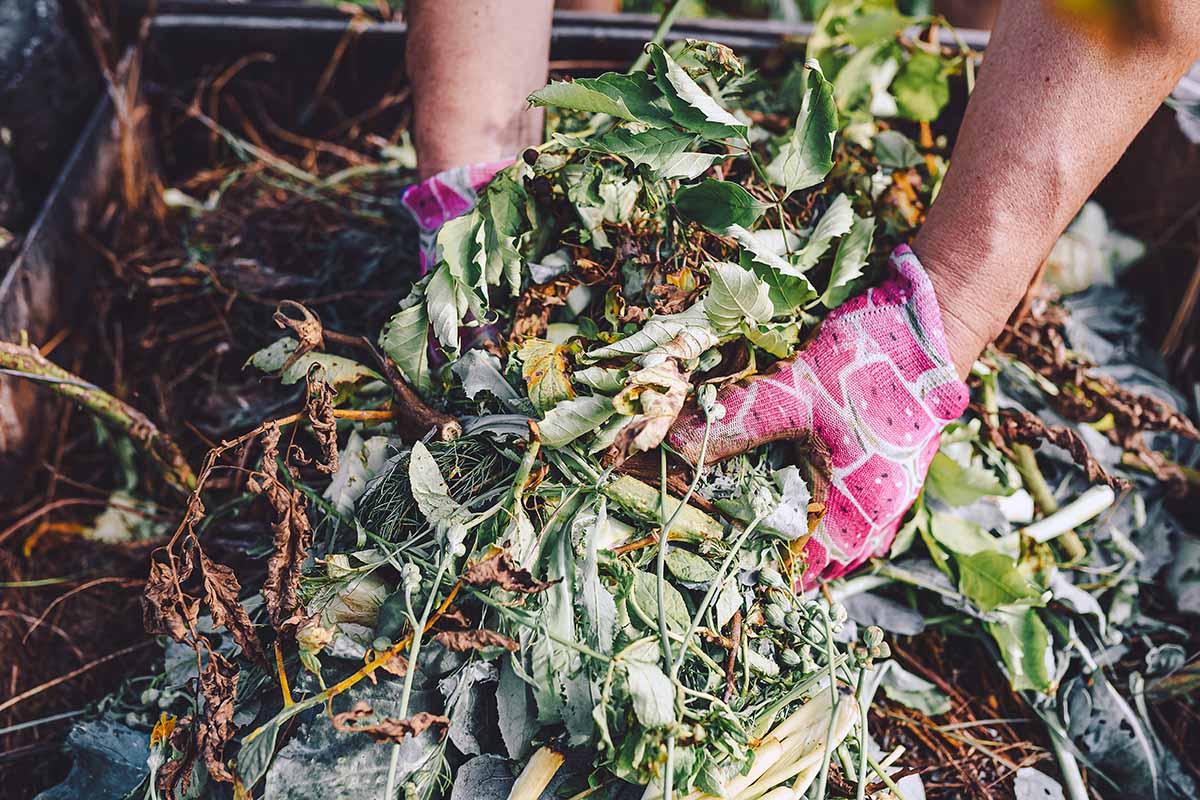

Composting can in the reduction of inoculum of many pathogens, together with some oomycetes, viruses, and fungi, at quite a few bills. There are furthermore pathogenic species which are hardly affected by the technique.
Nonetheless, there’s a substantial amount of analysis on the effectiveness of anaerobic soil disinfestation, which is a course of which can be utilized to compost. To induce an anaerobic surroundings, merely defend your pile moist and coated for quite a few weeks.
Ensuing from this actuality, I favor to recommend that you just simply troubleshoot alongside together with your explicit individual system.
First, attempt to discover out any ailments affecting your vegetation by consulting the property correct proper right here or contacting a regional plant pathologist by the use of your native extension workplace.
Try to see if there’s any literature that explains examined strategies for utilizing compost to quell or vector the illness.
If a illness infects your crop, to be on the protected facet, it’s best to keep away from composting it, nonetheless it’s also potential to attempt whether or not or not or not the illness will unfold after decomposition.
Usually, making sure your compost is moist and coated for quite a few weeks inside the summertime ought to vastly quell plant ailments in your yard.
It is attainable you may choose administration vegetation that you just simply maintain with compost that lacked the contaminated provides, and contemplate alongside alongside together with your vegetation which are handled with that which contained contaminated provides.
In case you may need a persistent, multi-season drawback with the equal illness, ponder wiping out any present of inoculum by eliminating diseased vegetation, accumulating and disposing of plant litter, and beginning over by composting non-infected gives.
Have you ever ever ever ever tried composting diseased plant tissue? What was your expertise? Inform us contained in the ideas half beneath!
And for extra information on composting and soil correctly being, try these guides subsequent:
